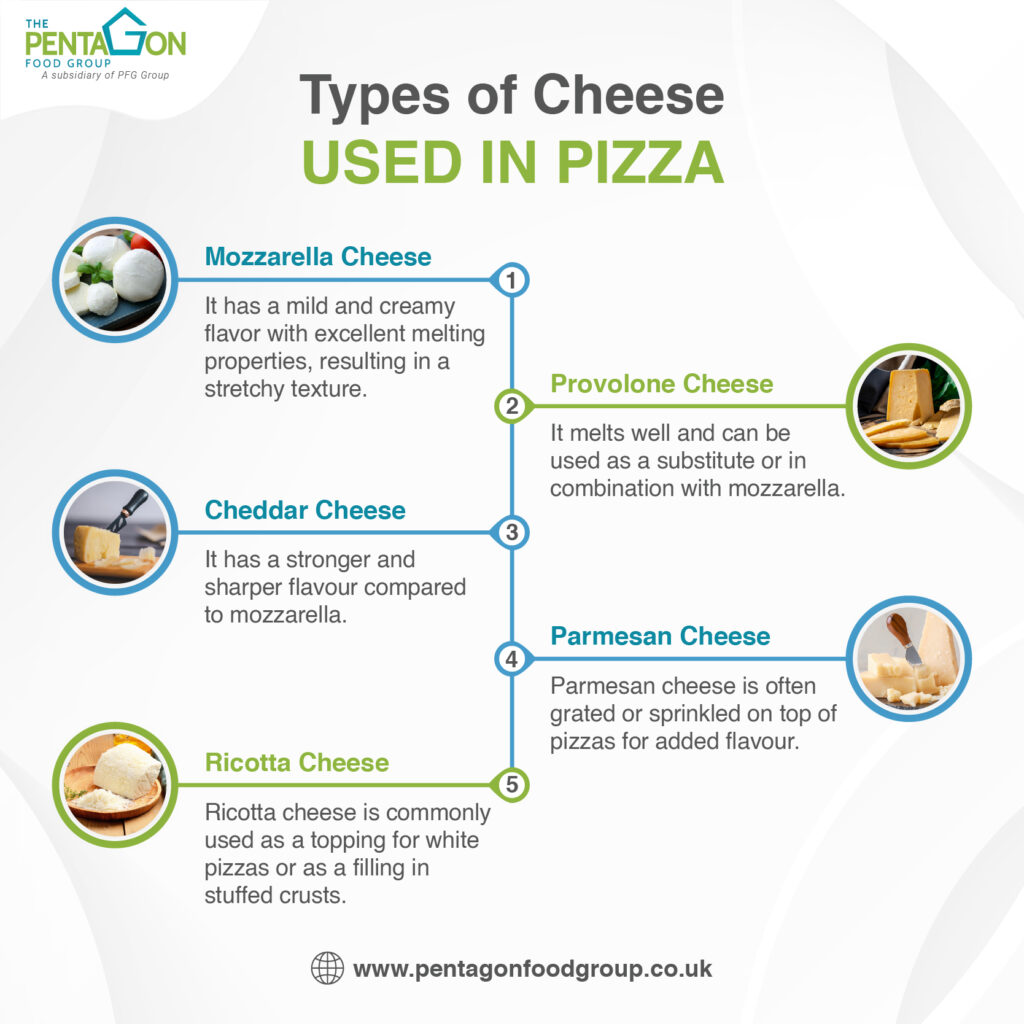Cheese is one of the most important elements in pizza and plays an important part in its preparation. If you enjoy this delectable dish, learn about the various kinds of pizzas cheese as well as how to construct a flawless pizza.
If you have ever questioned why some cheeses are only used for certain foods? Well, that is because not all cheeses are created for a specific type of dish. Some of them are used for certain food only because that is where they taste best. And one example would be the use of Mozzarella cheese on Pizza.
Mozzarella pizzas are popular nowadays, but not all people know what kind of cheese they are using when they eat this type of pizza. It is important to know that the kind of cheese used on your pizza can make it more delicious or less delicious, depending on what type is used.
In order to know if you have ordered a good pizza or not, you should know what kind of cheese was used in making it. You should also learn how to make a perfect pizza so that you will know if your favorite restaurant has been using the freshest, high-quality ingredients in their dishes or not.
Types of Cheese Used in Pizza

Pizza is an incredibly popular food in the United States according to food-industry analysts Technomic, Americans eat about 100 acres of pizza per day. That’s a lot of cheese.
Here are the basic types of cheese used in Pizza.

Mozzarella Cheese
Provolone
Cheddar Cheese
Parmesan Cheese
Ricotta
Mozzarella has been around since the late 1970s when it was invented in Italy by a man named Enzo Mozzarelli. He wanted to make a better version of a cheese he’d been eating for years. His recipe for the original version included salt, citric acid, and calcium chloride.
If you have ever visited a restaurant, you know that the mozzarella cheese they use is made by squeezing blocks of curdled milk into a mold. It’s called “mozzarella” because it is made with curdled milk. The same approach can be applied to any cheese: in making mozzarella, you draw off water and oil from the curdled milk and add other ingredients to make it all come together.
No one knows exactly what provolone is, although probably everyone has a good idea. It is a mild cheese, in the same family as mozzarella and cheddar, that can be made with cow’s milk or sheep’s milk. You can tell it is a soft cheese because it has about the same fat content as cottage cheese.
As far as I can tell, it was invented by someone who exploited a loophole in Italian law. There are two ways to make provolone: you can use raw milk from an Italian breed of sheep known as Provolone della Val d’Aosta (it is a kind of sheep, like Duroc and Saanen) or you can use pasteurized milk from cows known as Provolone Romagnola (they are from the Romagna region of Italy). The first way is more expensive and requires more care; the second cheaper and simpler.
In the 1950s there were only three or four makers of Provolone Romagnola. The cheese was not very popular in Italy, but it was cheap and easy to make at home, so people did.
Cheddar cheese is a kind of strong cheese produced in the Cheddar Gorge in Somerset, England. It is one of the oldest and most famous cheeses in the world. The oldest recorded recipe for cheddar comes from 1390, when it was described as “fermented curd cheese” by an English monk.
The name comes from the Cheddar people, a tribe of Celtic Britons who lived in Somerset during Roman times. The Romans called them Vectones and built a stronghold there. The Romans were not skilled at cheese-making, and they kept their cheddar rudimentary: white, crumbly, salty and very dry.
The Romans left Cheddar after a rebellion by their allies against Emperor Vespasian in 70 A.D., but the Britons kept making cheddar until they were conquered by Saxons in 912 A.D. That was about when cheddar began to acquire its distinctive sharp taste, full body and sharp aroma: not much was needed to make this ancient cheese delicious.
Parmesan cheese is an Italian granular, hard cheese. Just like other Italian hard cheeses, it can be shredded or shaved on the top of a freshly baked pizza. However, it should never be mixed into your cheese blends. Also, its dry texture and delicate flavour does not allow it to be baked in the oven. When this cheese is exposed to heat, its original flavour is ruined. So instead of adding it to your cheese mixture, you can garnish it on your pizzas to enhance its flavour. Parmesan topping on any pizza will do, but it’s especially recommended for Hawaiian, Margherita and Sicilian pizzas.
We eat ricotta cheese every day without even thinking about it. But if you ever wondered what ricotta actually is, this is the essay for you.
In the late 19th century, when demand for fresh milk outstripped supply in Italy, a dairy farmer named Gioacchino Belloni found himself with excess milk and no market for it. So he started to dry it into a solid form. The resulting cheese was called ricotta, and because it was used to make salami, which Italians considered a delicacy but couldn’t afford, it became known as “salamella.”
The cheese was delicious and cheap enough that people had no problem buying it by the kilo, but at only 6 percent butterfat it wasn’t exactly a money-maker. So Belloni tried to find a way of turning it into something more profitable. He found one: It could be reconstituted into a soft, spreadable paste by heating it to 70 degrees centigrade (158 degrees Fahrenheit).
Ricotta is a fresh Italian cheese that is made from the whey, or whey mixture, left when making mozzarella di bufala, the soft white cheese often used in lasagna. It has a faintly salty, slightly tart flavor and a buttery texture. It is usually sold in a plastic tub that contains approximately four ounces.
Best Pizza Cheese Brands in UK
The best companies focus on making a few good things well. Their products may be slightly different, but they are all consistent in the way they are made and the way they taste. They are also consistent in how they treat their customers: consistently good service, consistently polite response to questions and complaints, and a consistently clear and understandable website.
A food-industry magazine once polled its readers to rank the top cheese brands in Britain. The results were:
Stilton from James Humble
- cheap soft cheese from Aldi
- brie from Tesco
- hard cheese from Waitrose
- cheddar from Supervalu
- blue cheese from large supermarket chain
- Queso Manchego from large supermarket chain
- an expensive (but good!) Blue Cheese from small supermarket chain”
Pizza Cheese Suppliers
Pizza cheese suppliers are a vital part of the pizza supply chain. As a pizza cheese supplier, your first priority will be to ensure that you have enough cheese to meet the demand for pizza cheese.
As such, it is important that you monitor the demand for pizza carefully so that you can maintain an appropriate supply of cheese at all times. You will need to work closely with your customers, as well as with other parts of the supply chain (such as dough makers and tomato sauce suppliers), to ensure that your supply of cheese meets their needs without exceeding them.
The 5 Best UK Cheese Suppliers are
- Pentagon Food Group
- Northumberland Cheese Company
- The Fine Cheese Co.
- Neal’s Yard Dairy
- Paxton & Whitfield
Conclusion
Cheese is a mandatory component for making the ultimate pizza. By following this article, you will be able to pick out your favorite cheese for making the pizza of your dreams.
It became clear to us that there is something else beyond the standard toppings. The use of different and better quality cheese products, in conjunction with a killer crust, can truly elevate your pizza game and make you the talk of the town.
If you love pizza and cheese, or if you simply want to try a new cheese for your next pizza, this list is for you. Don’t forget to tell us what you think in the comments below! We are looking forward to reading them.
Are you looking for a Free Consultation for Food Services Distribution? Click Here!






